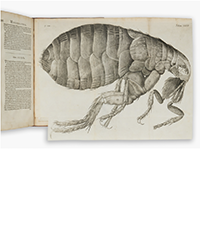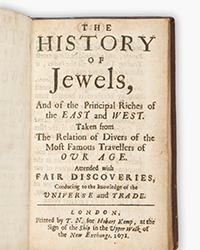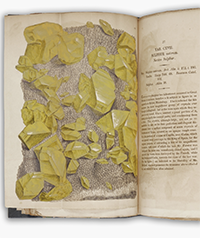During the 16th century, Protestants questioned the use of images in religion, as they associated it with paganism. One Jesuit priest named Louis Richeome made it clear that representing was, on the contrary, at the heart of Catholicism—and he put out a wonderful book with striking engravings to prove it.
Foretaste of Lost Paradise
This is a gorgeous engraving, and a very neat one. When I first set my eyes on it, I was captivated. It’s entitled TERRESTRIAL PARADISE AND THE TREE OF LIFE, and it’s taken from TABLEAUX SACRES DES FIGURES MYSTIQUES DU TRES AUGUSTE SACRIFICE ET SACREMENT DE L’EUCHARISTIE (Paris, Sonnius—1601), by Louis Richeome (1544-1625). There’s something special about it. Is it the beautiful composition of the image, with the magnificent tree in the middle, surrounded by the rivers mentioned in the Bible? Or the numerous animals, small and big, scattered all over the blossoming plains around? There are palm trees in the background, hills and flowers. Since this book was published, Man’s walked on the Moon, he’s made the electric light (you know, to take us out of the dark), he’s discovered DNA, and we’re permanently bombarded with images and videos. Yet here I was—mesmerized by a 400 year-old black and white engraving. I could almost smell the ripening fruits hanging in the trees, or the sweet caresses of the green pastures as I imagined lying on it. The cool breeze descending from the remote sunny hills restored my soul... As I took notice of Adam and Eve about to bite the apple in the background, I was struck by sore melancholy—I felt like I was about to lose something I’d never owned. What a powerful engraving!
Power of Images
Apart from a very rich frontispiece, there are 13 other engravings in this book, including ABEL that represents him and his brothers as they’re doing their offerings to God. Fascinating cloud of smelly smoke ascends from Abel’s fire to a translucent God. On the right is the unhappy Cain, with his burning fruits that God rejects. The dark smoke of his fire is driven away while he holds his head in despair—you can almost hear him crying. These engravings aren’t actually “taken from” the book, rather they compose it. The text is an obscure theologian's reflexion about the Eucharist, and is, as expected, boring.
No wonder the engravings fascinated me, they were supposed to. When the Protestants accused the Jesuits of manipulating people through images, Richeome answered with this book. And he called upon the right publisher: “Sonnius was a well known publisher and founding member of the powerful counter-reformation editing cartel, the Compagnie du navire,” the Musinski Rare Books website reads. As noted by Ralph Dekoninck and Pierre Antoine Fabre in their study “Batailles de l’image ...” (1): “In Richeome’s work, the engraved images are less illustrations than figures: indeed, they don’t serve the text, but exist by themselves (...). It is their essential function (...) to restore the power of images in a time when mass printing tended to reduce it.” 400 years later, they’re still efficient! They were drawn by Léonard Gaultier (1561-1635) and engraved by Charles de Mallery (1571-circa 1635)—two masters in their time. The ALDE auction house, which sold the last first edition listed on the Rare Book Hub Transaction History in 2018 for €272, writes: “the printing of the figures is excellent, with strong contrast.” According to the same source, Richeome’s book (whether the 1601 or the 1609 editions—see below) is not that common, but will sell for a few hundred dollars only.
True First
On its website (2), the Musinski Rare Books shop lists a no longer available copy of the first edition (1601), and gives interesting details: “It appears to have gone unnoticed that Sonnius printed at least three editions in 1601: comparison of this copy to the digitized Getty copy, and to photos of another copy in the trade, all with the same imprint, reveals three entirely different typesettings, i.e. distinct editions. Presumably the book sold out quickly, necessitating new editions in a short span of time. Apparently after two (or more?) impressions the copperplates were too worn to re-use: except for the title, all the engravings in the present edition (and the other 1601 edition) differ from those of the Getty copy, which at least in part match those of the BnF copy (based on the IFF description), and which were reused in the 1609 edition. For example, in chapter one, in his description of the Garden of Eden, Richeome mentions a bird of paradise perched in a palm tree, and specifies the position of the Tree of Knowledge, to the left, or west, of the garden. In this copy’s engraving (p. 20), by Mallery, there is no palm tree, no bird of paradise, and the tree of knowledge is on the right.” It’s been actually totally reworked, as shown by the Googlebooks digitized copy (3). On the Tree Of Life plate, Mallery’s signature’s disappeared. On the contrary, it’s still to be found on the reworked version of the Abel plate that features the murder scene as well as an angel in the background—both missing from the plate of our copy that Musinski Rare Books believes to be the true first edition.
It’s interesting to note that in 1700, Pierre Gallay published a compilation of the engravings alone. Delon/Hoebax sold a copy for €100 at Drouot’s in 2021. The description reads: “Re-interpretation by Thomas de Leu of the plates first published in Richeome’s work of the same title (Sonnius, 1601).” This is what we call focusing on the essential: in Richeome’s book, the engravings do the talking.
T. Ehrengardt
(1): https://books.openedition.org/pufr/8426?lang=fr





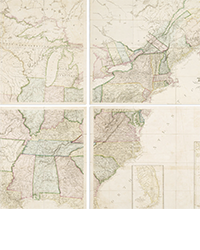
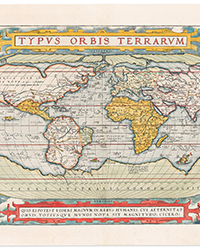

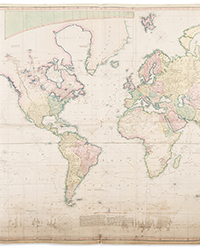
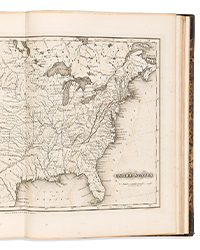


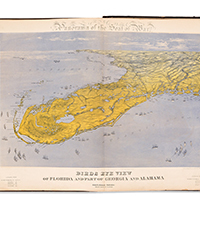
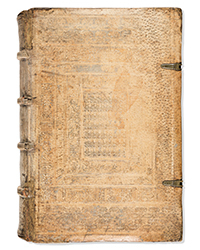
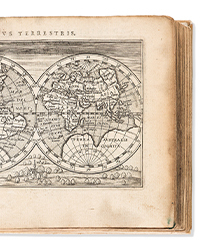


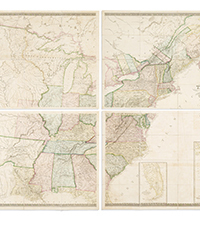


![<b>Sotheby’s, Dec. 11:</b> Darwin and Wallace. On the Tendency of Species to form Varieties..., [in:] <i>Journal of the Proceedings of the Linnean Society,</i> Vol. III, No. 9., 1858, Darwin announces the theory of natural selection. £100,000 to £150,000. <b>Sotheby’s, Dec. 11:</b> Darwin and Wallace. On the Tendency of Species to form Varieties..., [in:] <i>Journal of the Proceedings of the Linnean Society,</i> Vol. III, No. 9., 1858, Darwin announces the theory of natural selection. £100,000 to £150,000.](https://ae-files.s3.amazonaws.com/AdvertisementPhotos/00d5fd41-2542-4a80-b119-4886d4b9925f.png)


